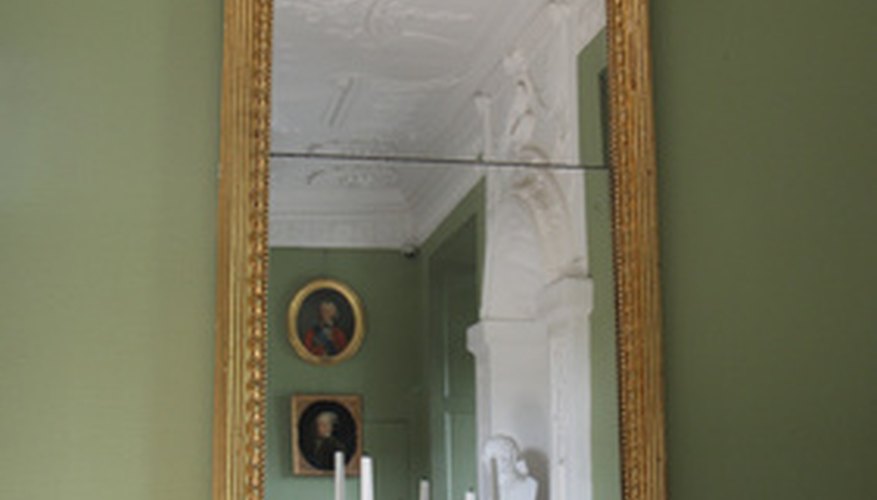Centuries ago, the Romans and Greeks used polished metal disks to see their reflection. By the 1800s, mirrors were made by coating a piece of glass with metallic silver and were considered important decorative pieces. Frames could be ornately carved in wood or made of ivory, silver, or tortoiseshell. Knowing the age of a mirror will help determine its value and whether it is a genuine antique.
Use a magnifying tool to carefully examine all around the frame. Look for a production date on the frame, on the back or in the corner. It may have the name of the manufacturer; if you can identify the manufacturer, you can research when that particular mirror was made. Frames with engraving or embedded sketching, or that are ornately embellished, are more indicative of older age.
- Centuries ago, the Romans and Greeks used polished metal disks to see their reflection.
- It may have the name of the manufacturer; if you can identify the manufacturer, you can research when that particular mirror was made.
Examine the back of the mirror for any identifying information about the production date or manufacturer. Most valuable mirrors date to 1850 or earlier, but a very elaborate design, even from 1900, is still more valuable than less ornate designs.
Carefully remove the mirror from the frame and examine the surface of the glass closely. Typically, antique glass has some ripples and/or bubbles in it, as well as a variety of such colours as greens, blues, and browns depending on chemical traces and how long it has been exposed to UV light. Genuine silver backing will usually feature light spots and clear areas. Older glass may even be a bit wavy. Even newer mirrors' backing may turn black and flake off, so that is not necessarily indicative of an antique mirror. If it's a wall mirror, note the thickness at the top, middle and bottom. Usually older mirrors are noticeably thicker at the bottom. Uniform colour, with no significant spotting or chips, increases the value of a mirror.
- Examine the back of the mirror for any identifying information about the production date or manufacturer.
- Even newer mirrors' backing may turn black and flake off, so that is not necessarily indicative of an antique mirror.
Closely examine the edges of the mirror. Bevelled edges are indicative of older mirrors, since grinding and polishing glass is time-consuming and expensive. Bevelled edges indicate the glass is good quality, and the bevelled edges add strength to the mirror.
Newer glass is thinner and gives a whiter reflection than old glass, so test its age by holding the edge of a white card right up against the glass. If the card and the reflection appear to be the same white colour, then the mirror was most likely made after 1850. Should the reflection appear more of a yellow or grey hue, then the glass was most likely made before 1850.
TIP
Items 50 years old or more are usually classified as antiques, although some experts contend that 100 years or older is better. You can also take a digital photo of it and send it to an antique appraiser for more information, or take it to an appraiser in person. If you have an old mirror with a broken frame or cloudy glass, you can have the glass resilvered to bring it back to its original condition.
WARNING
Never submerge a mirror, as that could break down the resin filling and cloud the glass.
